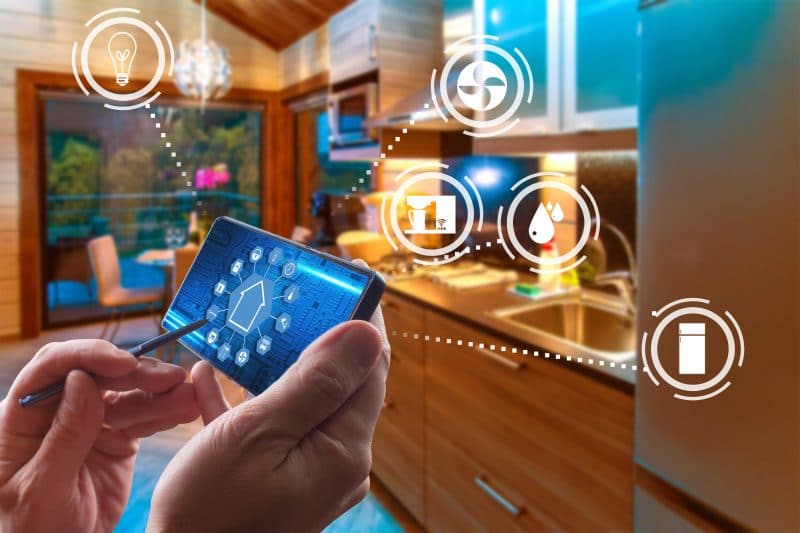Smart homes are those that employ technology to automate, regulate, and improve a variety of areas of daily life, including lighting, security, entertainment, comfort, and energy economy. Modern living is a way of life that embraces the advantages of smart home technology and adjusts to the users’ shifting requirements and preferences. Here are few examples to illustrate how modern living and smart houses are integrated:

- Smart home appliances have internet access, allowing them to communicate with one another, the user, and other services. Smart speakers, for instance, may play music, respond to queries, manage other devices, and set reminders.
- The major components of the smart home network, or hubs, are managed and coordinated by them. They might be standalone gadgets like the Amazon Echo or Google Home, or they can be built into PCs, smartphones, and tablets.
- Software programmes known as “smart home apps” enable users to access and manage their connected devices from anywhere. Based on the user’s behaviour and choices, they can also offer comments, suggestions, and alarms.
- Smart home sensors are tools that identify and quantify a range of physical phenomena, including motion, temperature, humidity, light, sound, smoke, etc. They have the ability to initiate processes or transmit information to different hardware or services.
- Actuators in smart homes are gadgets that carry out tasks physically in response to commands or signals from other gadgets or services. They could be smart appliances, smart appliances, smart lights, smart locks, smart thermostats, etc.
- Smart home scenes are programmed settings or routines that, in response to specific circumstances or occurrences, turn on a variety of smart home gadgets. A “good morning” scene might play the news, brew coffee, turn on the lights, and adjust the thermostat.
- Smart home voice control is a feature that enables users to communicate with their smart home appliances using natural language commands or inquiries. Smart speakers, cellphones, and other tech tools with microphones and speakers can be used for it.
- A smart home security system guards against burglars, fire, flood, and other dangers. It may consist of smart alarms, smart smoke detectors, smart cameras, smart doorbells, etc. In the event of an incident, it can also alert the user or call for help.
- A method for managing the energy use and production of smart homes. Smart batteries, smart solar panels, smart switches, smart plugs, and smart metres are a few examples. It can also offer advice on how to save money and energy.
- A system for smart homes can make it more enjoyable and convenient to watch TV, listen to music, play video games, or read books. Smart projectors, smart speakers, smart soundbars, smart TVs, smart remote controls, etc. can all be part of it. According on the user’s choices, it can also offer tailored recommendations and material.
- A method for improving the physical and mental health of the residents of a smart home is called smart home health and wellness. It can consist of smart scales, smart fitness trackers, smart blood pressure monitors, smart air purifiers, smart sleep sensors, etc. Based on the user’s health information, it can also offer tailored recommendations and criticism.
- Smart home personalization is a feature that enables the user to alter their smart home’s services and products to suit their preferences and requirements. It may involve creating user profiles, developing voice or facial recognition, modifying device settings, selecting preferred content or services, etc.
- The process of connecting and coordinating smart home services and products with other platforms or ecosystems is known as smart home integration. It may involve using voice assistants like Alexa or Google Assistant to control multiple appliances or services, smart home apps like IFTTT or Samsung SmartThings to design automation rules or scenarios, or cloud services like Google Drive or Dropbox to store and access data from various devices.
- The problems or difficulties a user could encounter when utilising smart home technologies are referred to as smart home challenges. Security risks, such as hacking, phishing, or spying; privacy concerns, such as data collection, sharing, or misuse; reliability issues, such as device malfunction, network outage, or power outage; compatibility problems, such as device or service incompatibility, interoperability, or standardisation; or ethical conundrums, such as user consent, responsibility, or trust, can all be included.
Now that you are aware of the advantages of a smart house, think about purchasing a luxury flat from Samasta Spacelinks. Here, you can easily include smart home technologies to design a contemporary and practical living area.

